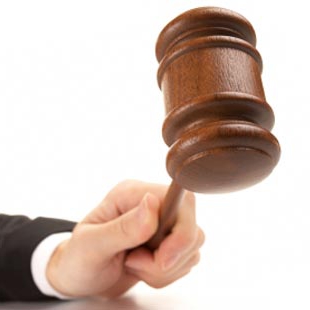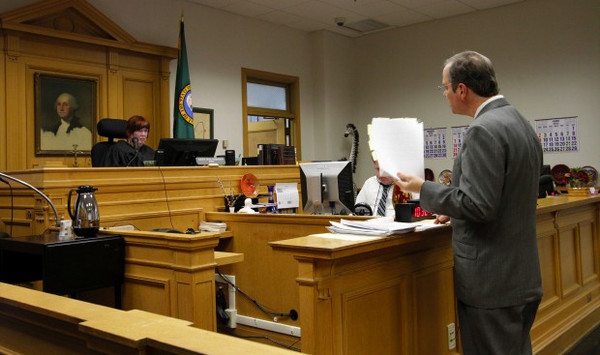Civil protection of property rights is ensured through a set of legal means. They are provided for in law. All existing means form an integral system of protection of property law. 
Main methods
The following tools are distinguished in the system:
- Real-law methods (negative and vindication claims).
- Legal liability instruments. These include funds:
- based on the protection of the interests and rights of the parties to a civil transaction;
- used to compensate for damage and return unreasonably saved or received property.
- Receptions of protection based on general legal norms. These include claims:
- on recognition of property rights, including the release of an object from arrest (exceptions to the inventory);
- on invalidation of an act infringing on the interests of governing bodies and state power;
- the illegality of termination of property rights;
- on compensation for harm caused as a result of the seizure of property, etc.
Basic concepts
Vindication refers to an appeal for the recovery of property from illegal possession of others. A negative lawsuit is a requirement to remove obstacles to the exercise of property rights. The difficulties that have arisen are not related to depriving the owner of the possibility of ownership. In addition to negative and vindication tools, the law provides another means - a claim for recognition of property rights. Such appeals quite often fall before arbitration courts. Next, consider what constitutes a lawsuit to recognize ownership. 
General information
Most claims for the recognition of property rights are binding in nature, due to the fact that they proceed from relative legal relations. The resolution of these disputes is carried out on the basis of the relevant rules on inheritance, contractual interactions, common property of spouses and others. In practice, however, there are also requirements that apply to third parties. They, as a rule, do not have any relative ties with the plaintiff. For example, the owner may demand the recognition of the right of ownership from local authorities, which refuses to issue title documents due to the fact that they were not executed in a timely manner or were not preserved.
Redemption prescription
Despite the fact that the lawsuit on the recognition of property rights has been used in judicial practice since the 19th century, its legal nature and features remain a debatable issue today. In particular, the point about the applicability of the extinguishing prescription to it remains controversial. The opinions of experts on this issue were divided. Some scholars favor the application of statute of limitations to such claims within the existing general framework of the term. According to other lawyers, its effect on such appeals does not apply due to their specifics. In favor of the inadmissibility of the extinguishing prescription, experts cite the following arguments:
- Such appeals protect only the challenged, and not violated right.
- They have no material claims against the defendant, which are extinguished by the expiration of the limitation.
- Such claims relate to ongoing legal relationships. In this regard, extinguishing prescription cannot apply to them.

In favor of admissibility, the following arguments are given:
- The law establishes certain periods during which you can apply for protection.
- A person whose right is violated, with prolonged non-treatment, probably does not have an interest in property.
- Civil interactions must be stable and defined.
It should also be said that in the legislation of the RSFSR there was never an indication that claims for recognition of rights are among those to which the extinguishing limitation does not apply. This interpretation of the standards is relevant today. Actually, the current judicial practice follows this path.
Characteristic
A claim for recognition of ownership may exist in a negative or positive form. The latter is aimed at confirming that the owner of the property has legal capabilities to dispose, use and own the thing. A negative claim presupposes that the defendant has no right to the disputed object. Using the tool in question, the subject is able to confirm that between him and the offender there are or are not legal ties regarding the disputed thing. It should be noted that the subject of the claim is aimed solely at stating a legal relationship that has developed or has not developed between the parties. 
Specificity
Recognition lawsuit for property relations property rights is of particular importance. This is due to the fact that the very possibility of possession, disposal and use can act as a matter of dispute (including between the actual and title owners). As for the nature of this tool, there is no consensus on this issue. Some experts recognize it as a kind of vindication, others as Negative claim the third - as an independent tool of protection. If you ignore the independence of this tool, then in some cases the legal qualification of claims becomes impossible.
The situation will be such that vindication will become inapplicable due to the fact that in most cases the property is at the disposal of the owner. The appeal cannot be considered negative. This is due to the fact that in this case there are not just obstacles to the exercise of powers, but, in fact, legal, and in some cases, actual seizure of property takes place, depriving the owner of all rights to it. At the same time, the requirement cannot be classified as obligatory, since it retains a material character. An application for such acquisition of a property right may be directed in relation to any claimant, by whose will the property is included in the inventory. All this allows us to consider the considered tool as an independent tool of protection.
Parties to the dispute
At the request of the plaintiff, the owner of an individually defined property acts as the plaintiff. He may or may not own it. His rights are denied, disputed or not recognized by a third party who does not have relative or obligatory legal relations with the owner on this thing. The ability to make a claim has title owner. As it, in particular, can be the subject of the right of operational management or economic management. The defendant is a third party. It can both claim property, and not make demands, but in any case not recognize the owner of his rights to the thing. 
Elements of the dispute
As the subject of the lawsuit acts, as was said above, solely a statement of the fact that the plaintiff owns the right of ownership. In this case, the defendant is not expected to take any action. The decision taken on this lawsuit should eliminate doubts about the ownership of the law, provide the necessary assurance of its existence, and give certainty to the interaction between the parties.The court ruling also acts as a basis for the implementation of certain opportunities related to the possession, disposal and use of property. The grounds for ownership are circumstances that are legal confirmation of the possibilities of the owner of the thing. They may be based on testimonies, documents submitted and other evidence that indicates ownership of the property.
Presumption of law
This tool protects the interests of property owners if property rights are in their possession. It is not reflected in regulatory enactments, but acts in fact. In other words, the court, in certain cases when there is no opportunity to resolve a dispute on the evidence provided, can put an end to the presumption. Since it reflects the indisputable fact that in most cases the actual owner of the property has the necessary powers, there is no doubt the advisability of using this tool in arbitration court practice.
Inventory
Property rights may be in custody. It implies a ban on the use, disposal and ownership of property. Arrest (inventory) is used as a measure to enforce a court order for damages or a confiscation decision. In the latter case, the actions are aimed at the implementation of other legal capabilities of individuals. Confiscation is usually done bailiff. The list and prohibition of disposal, use, possession may act as a protective measure when opening an inheritance. In this case, it is implemented by a notary public. 
Controversial issues
In some cases, values that belong to another person are mistakenly included in the inventory. As a rule, we are talking about the requirement of one of the spouses to exclude his share of the total property or specific things that belong to him. This is a corresponding statement of ownership. A dispute regarding the release of property from custody is examined in the general manner established by law for these appeals. In this case, the reason why the right of ownership is prohibited will not matter. For example, an arrest may be imposed on a house:
- In order to implement measures to secure the claim.
- As a foreclosure on property belonging to the debtor, with the aim of executing a sentence or court decision.
- As a notarial protective measure of inherited values.
- In other cases provided for by the norms.
The implementation of a penalty by a court decision does not appear as a reason for refusing to accept a claim. The authorized body is obliged to consider the appeal if the case in which the seizure is made is not resolved. Upon recognition of the impossibility of consideration, the court shall suspend proceedings for the release of property from the inventory.
The lawsuit "Recognition of ownership": state duty
It is established depending on what standards this or that court is guided by. In particular, in arbitration practice state duty for the right the property is similar to that paid on appeals of a non-property nature. This is regulated by Art. 103 p. 2 AIC and Art. 333.21 p. 4 and 1 of the Tax Code. They indicate that the "price of the claim" is 4,000 r. In the courts of general jurisdiction, the calculation is carried out in accordance with the value of the property. In this case, refer to Art. 91 p. 1 and 9 of the Code of Civil Procedure. If the value of the property is from 1 million p., Then the "claim price" is 13.2 p. P., Then - 0.5% each. On average, for every next million you will have to pay 5 tons.
Land law
In case of a dispute, ownership shall be confirmed, among other things, by additional circumstances (if necessary). They are associated with the availability of legal justifications for the use, possession and disposal of a residential building, taught by the owner before July 1, 1990.The acquisition of title to an allotment depends on this fact. Also, as an additional circumstance, legally justified unlimited (permanent) use or lifetime inheritance of property, which is subject to free reissuance, may come forward. 
Reasons for citizens to apply
The need to confirm ownership of the plot may be due to the uncertain status of the allotment. Formally, on the one hand, it is in the municipal possession, possession and use. On the other hand, the allotment represents in the future an object of the citizen’s property right, in connection with the fact that the latter has the opportunity to re-register it for himself. Of particular importance is the interest of the subject himself in obtaining a legal justification of their capabilities. A refusal of municipal authorities to reissue documents may also serve as a reason for filing a claim for recognition of ownership of land. A citizen may appeal such a response to his appeal. However, in this case, there will not be a dispute on the recognition of property rights, but a violation by the municipal authority in the form of non-compliance with the requirements governing the procedure for the free provision of land for use, disposal and possession.
Finally
It should be noted that without providing entities with real legal protection, it is impossible to establish full-fledged civil law relations. By making demands, a person does not require the return of ownership of a thing belonging to him or the cessation of activities that interfere with his disposal, use of property. For example, by declaring his intellectual property right, a citizen seeks a formal establishment of his status. Such situations arise when the defendant disputes or ignores the legal interests of the person. In the modern world, intellectual property law is as important as the justification of the possession, disposal and use of real estate.
